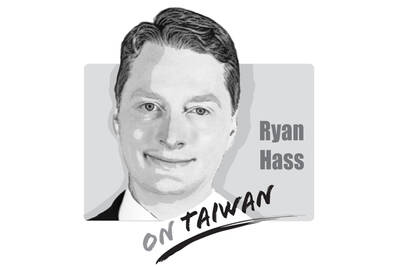In Taiwan’s lush, verdant landscapes, where rain frequently nourishes dense forests, the notion of wildfires might seem out of place. However, there have been cases over the past few years, including a significant blaze near Lishan (梨山) in Taichung and devastating damage along the Nenggao-Andongjun trail (能高安東軍), which starkly contradict this perception. These fires, emblematic of a global trend exacerbated by climate change, signal an urgent need for Taiwan to revamp its wildfire management strategies and harness cutting-edge predictive technologies.
Research, notably a pivotal study featured in the journal Climatic Change, projects an uptick in wildfire risk across Taiwan, particularly during its dryer months from November to April. This research leverages advanced simulations to forecast fire weather severity, highlighting Taiwan’s increasing vulnerability to wildfires amid the shifting global climate.
The gravity of Taiwan’s wildfire predicament, fueled by a changing climate and a predisposition to drought, demands immediate action. The incidents at Lishan and the record-breaking Yushan fire in 2021 underscore the necessity for strategies customized to Taiwan’s diverse topography and climate.
Forests, aside from providing a refuge for relaxation and physical activity, play a crucial role in public health and environmental consciousness. The burgeoning interest in forest recreation, while beneficial, inadvertently escalates the risk of fire ignitions. Striking a balance between enjoying these natural resources and mitigating wildfire risks is paramount, requiring widespread public education on responsible forest use, alongside rigorous management and policy initiatives.
Taiwan’s strategy to counteract this looming threat encompasses multifaceted measures, including policy revisions aimed at curtailing risk factors and public campaigns to highlight wildfire dangers. The pivotal role of technological innovation, particularly in forecasting and early detection, cannot be overstated.
By drawing inspiration from countries such as Australia and the US, which have integrated technology with traditional firefighting techniques, Taiwan can significantly enhance its wildfire preparedness and response capabilities. These nations’ commitment to community education further exemplifies the importance of reducing human-induced fire ignitions.
As Taiwan confronts the reality of a warmer world, it is imperative to acknowledge that its traditionally rain-fed, lush greenery offers little refuge from the advancing threat of wildfires. A proactive approach, embracing policy reform and technological innovation, is vital for safeguarding Taiwan’s ecological and human assets.
In facing the wildfire challenge, Taiwan stands at a crossroads, requiring a comprehensive approach that merges policy innovation, technological advancement and international cooperation. Improving disaster prevention, mitigation and response efforts could fortify Taiwan’s defenses against wildfires. An international symposium, fostering an exchange of expertise and best practices with countries navigating similar issues, could serve as a linchpin in this strategy. Such collaborative endeavors could ensure that Taiwan not only leverages local insights, but also incorporates global perspectives into a robust wildfire management framework, thus preserving its unique natural legacy for generations to come.
Simon Wang is a professor in the College of Agriculture and Applied Sciences at Utah State University in the US. Liu Wan-yu is a professor in the Department of Forestry at National Chung Hsing University.

There has been much catastrophizing in Taiwan recently about America becoming more unreliable as a bulwark against Chinese pressure. Some of this has been sparked by debates in Washington about whether the United States should defend Taiwan in event of conflict. There also were understandable anxieties about whether President Trump would sacrifice Taiwan’s interests for a trade deal when he sat down with President Xi (習近平) in late October. On top of that, Taiwan’s opposition political leaders have sought to score political points by attacking the Lai (賴清德) administration for mishandling relations with the United States. Part of this budding anxiety
The diplomatic dispute between China and Japan over Japanese Prime Minister Sanae Takaichi’s comments in the Japanese Diet continues to escalate. In a letter to UN Secretary-General Antonio Guterres, China’s UN Ambassador Fu Cong (傅聰) wrote that, “if Japan dares to attempt an armed intervention in the cross-Strait situation, it would be an act of aggression.” There was no indication that Fu was aware of the irony implicit in the complaint. Until this point, Beijing had limited its remonstrations to diplomatic summonses and weaponization of economic levers, such as banning Japanese seafood imports, discouraging Chinese from traveling to Japan or issuing
On Nov. 8, newly elected Chinese Nationalist Party (KMT) Chairwoman Cheng Li-wun (鄭麗文) and Vice Chairman Chi Lin-len (季麟連) attended a memorial for White Terror era victims, during which convicted Chinese Communist Party (CCP) spies such as Wu Shi (吳石) were also honored. Cheng’s participation in the ceremony, which she said was part of her efforts to promote cross-strait reconciliation, has trapped herself and her party into the KMT’s dark past, and risks putting the party back on its old disastrous road. Wu, a lieutenant general who was the Ministry of National Defense’s deputy chief of the general staff, was recruited
The Food and Drug Administration (FDA) on Nov. 5 recalled more than 150,000 eggs found to contain three times the legal limit of the pesticide metabolite fipronil-sulfone. Nearly half of the 1,169 affected egg cartons, which had been distributed across 10 districts, had already been sold. Using the new traceability system, officials quickly urged the public to avoid consuming eggs with the traceability code “I47045,” while the remainder were successfully recalled. Changhua County’s Wenya Farm — the source of the tainted eggs — was fined NT$120,000, and the Ministry of Agriculture instructed the county’s Animal Disease Control Center to require that